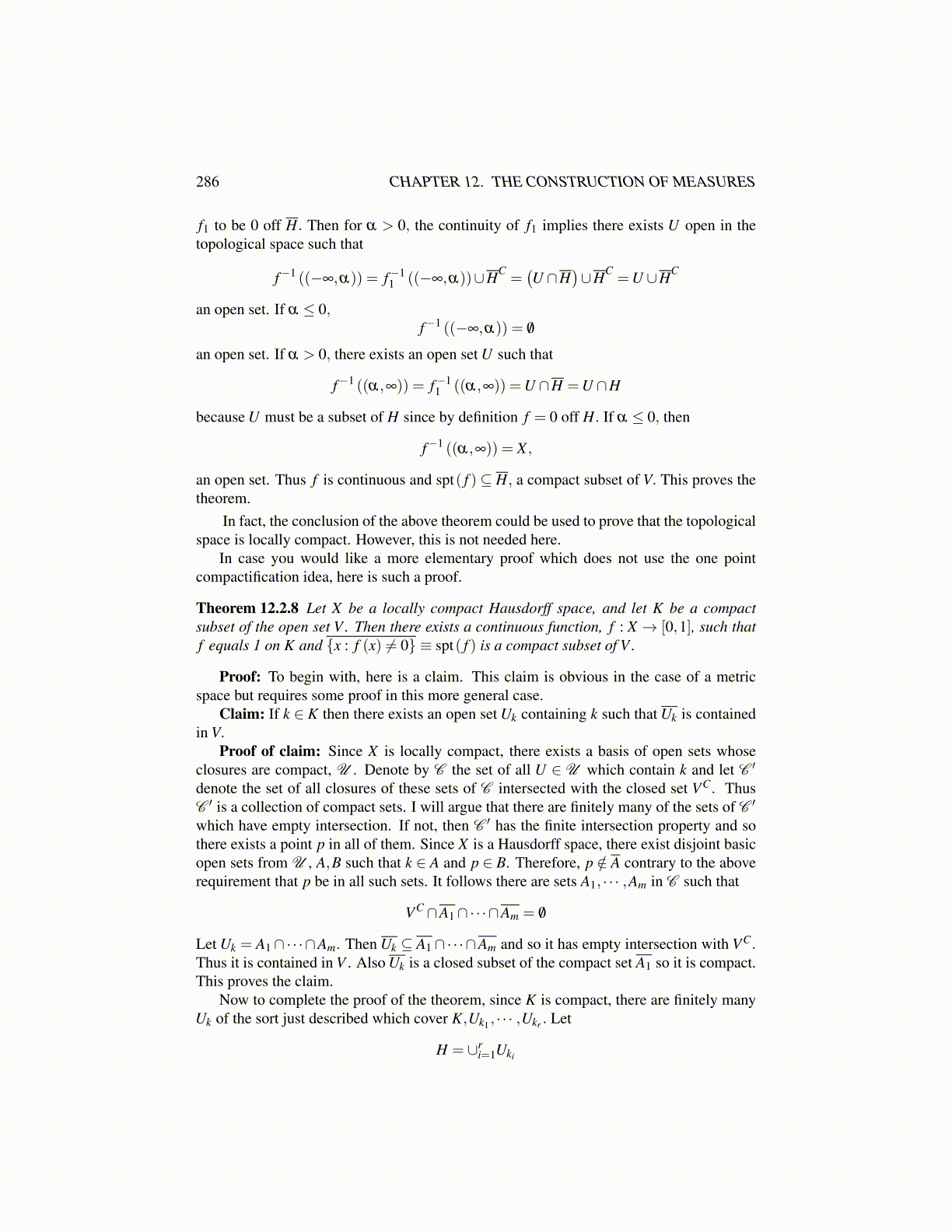
286 CHAPTER 12. THE CONSTRUCTION OF MEASURES
f1 to be 0 off H. Then for α > 0, the continuity of f1 implies there exists U open in thetopological space such that
f−1 ((−∞,α)) = f−11 ((−∞,α))∪HC
=(U ∩H
)∪HC
=U ∪HC
an open set. If α ≤ 0,f−1 ((−∞,α)) = /0
an open set. If α > 0, there exists an open set U such that
f−1 ((α,∞)) = f−11 ((α,∞)) =U ∩H =U ∩H
because U must be a subset of H since by definition f = 0 off H. If α ≤ 0, then
f−1 ((α,∞)) = X ,
an open set. Thus f is continuous and spt( f )⊆ H, a compact subset of V. This proves thetheorem.
In fact, the conclusion of the above theorem could be used to prove that the topologicalspace is locally compact. However, this is not needed here.
In case you would like a more elementary proof which does not use the one pointcompactification idea, here is such a proof.
Theorem 12.2.8 Let X be a locally compact Hausdorff space, and let K be a compactsubset of the open set V . Then there exists a continuous function, f : X → [0,1], such thatf equals 1 on K and {x : f (x) ̸= 0} ≡ spt( f ) is a compact subset of V .
Proof: To begin with, here is a claim. This claim is obvious in the case of a metricspace but requires some proof in this more general case.
Claim: If k ∈ K then there exists an open set Uk containing k such that Uk is containedin V.
Proof of claim: Since X is locally compact, there exists a basis of open sets whoseclosures are compact, U . Denote by C the set of all U ∈ U which contain k and let C ′
denote the set of all closures of these sets of C intersected with the closed set VC. ThusC ′ is a collection of compact sets. I will argue that there are finitely many of the sets of C ′
which have empty intersection. If not, then C ′ has the finite intersection property and sothere exists a point p in all of them. Since X is a Hausdorff space, there exist disjoint basicopen sets from U , A,B such that k ∈ A and p ∈ B. Therefore, p /∈ A contrary to the aboverequirement that p be in all such sets. It follows there are sets A1, · · · ,Am in C such that
VC ∩A1∩·· ·∩Am = /0
Let Uk = A1∩ ·· ·∩Am. Then Uk ⊆ A1∩ ·· ·∩Am and so it has empty intersection with VC.Thus it is contained in V . Also Uk is a closed subset of the compact set A1 so it is compact.This proves the claim.
Now to complete the proof of the theorem, since K is compact, there are finitely manyUk of the sort just described which cover K,Uk1 , · · · ,Ukr . Let
H = ∪ri=1Uki